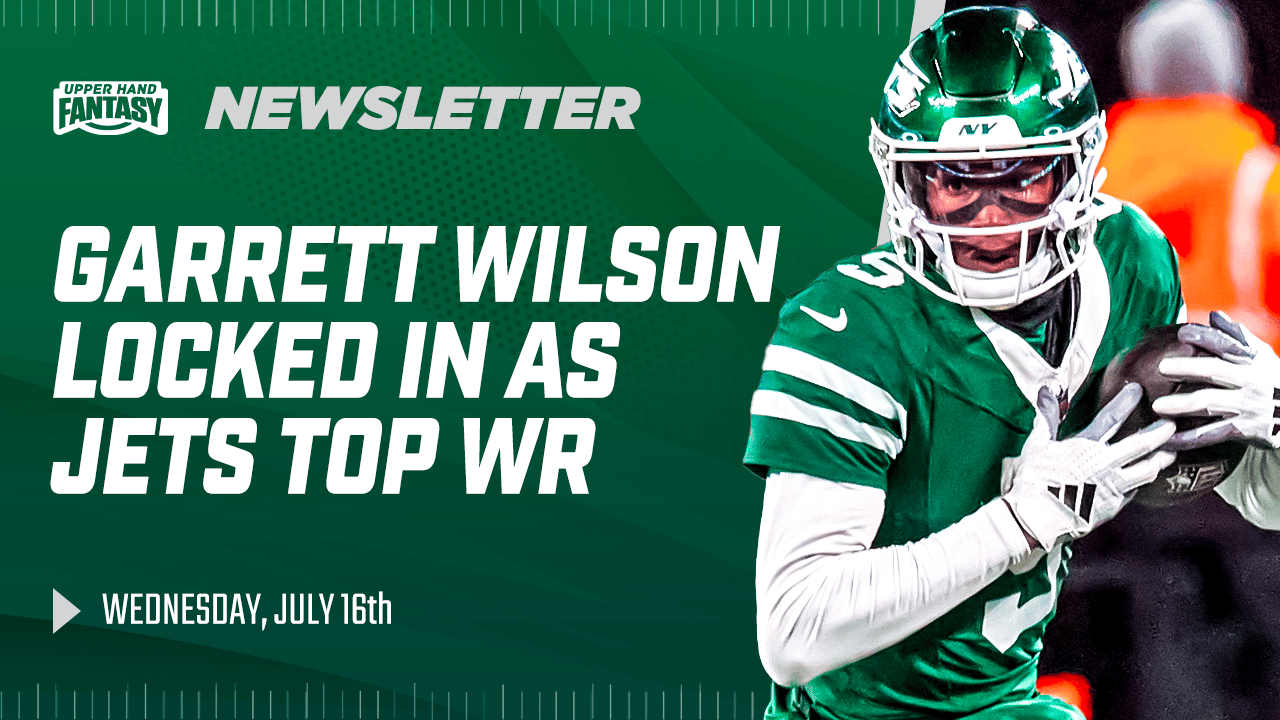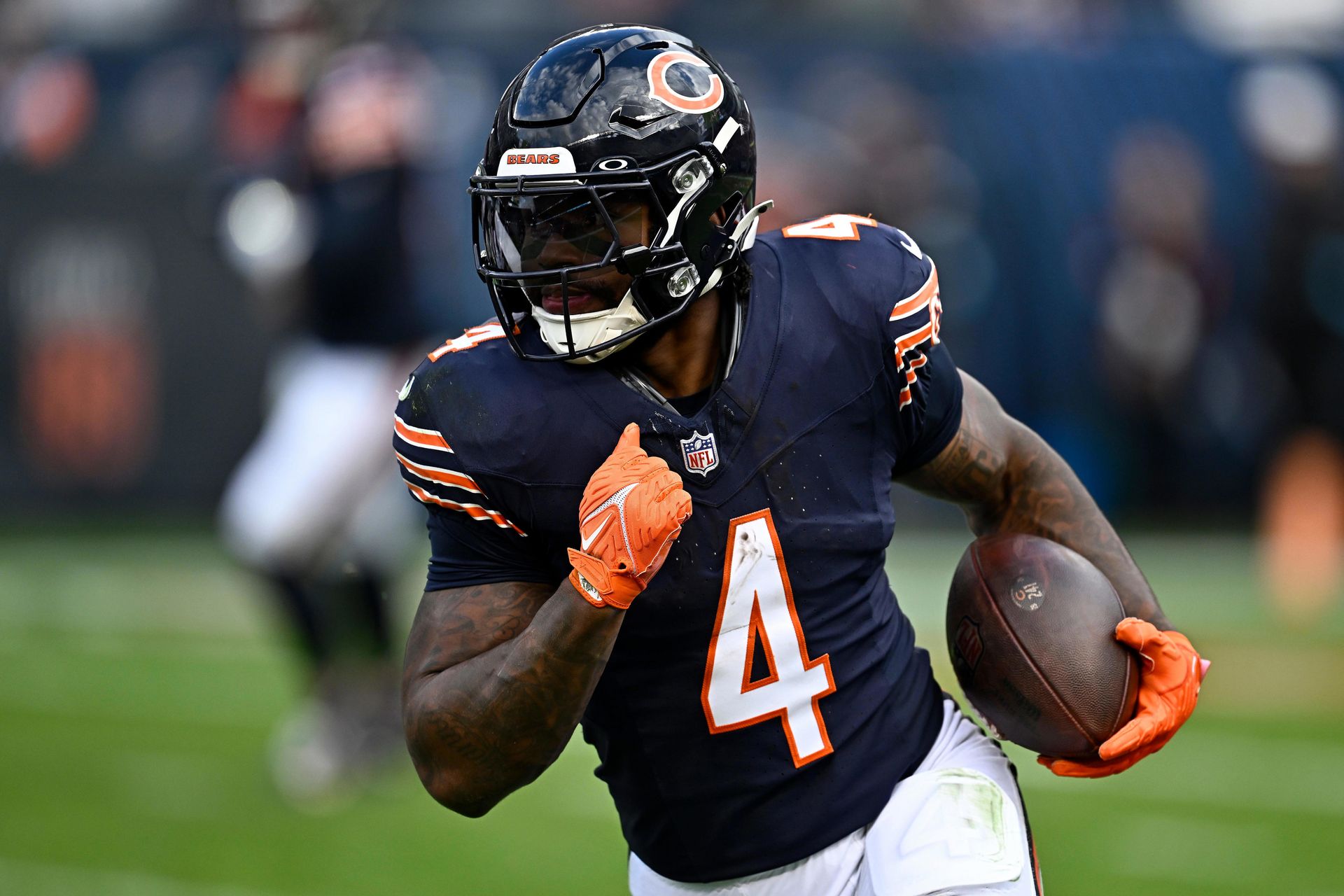- Upper Hand Fantasy Newsletter
- Posts
- Garrett Wilson 🔒, Jauan Jennings on the move?
Garrett Wilson 🔒, Jauan Jennings on the move?
The Jets have their WR1 secured, but the 49ers are facing another shakeup in the WR room...



Jets sign WR Garrett Wilson to four-year, $130M extension that ties him to the team through 2030
One of the most deserved deals that had yet to be done up to this point, Garrett Wilson is locked in as the Jets’ unquestioned WR1 for the foreseeable future. As far as fantasy ramifications are concerned, the deal changes little - Wilson was set to lead the team in targets by a country mile regardless of whether or not he was playing on his rookie deal or a new extension, as beat reporters have suggested (jokingly, but still notably) that Wilson could clear 200 targets this season with former college teammate Justin Fields under center. While 200 might be hyperbole, it’s not a stretch to say that the target competition is as thin as it’s been for Wilson in his career with just Josh Reynolds, Allen Lazard, and Mason Taylor around to draw targets downfield. Of course, Breece Hall has been one of the most prolific and high-volume pass catching RBs over the first three years of his career and will see a solid target share of his own, but Wilson is far and away the best receiving talent and will likely be utilized as such by new OC Tanner Engstrand. Oh, and he’s been the second-most targeted WR since 1992 through his first three years of his career behind only Justin Jefferson (h/t Graham Barfield)
49ers WR Jauan Jennings requests new extension or trade from 49ers ahead of 2025 regular season
The request comes on the heels of Jennings two-year extension signed just last season, with the 49ers pass catcher set to make $7.5M in 2025. It’s especially interesting timing from Jennings, not only because he just signed a deal ahead of 2024, but also because of the current state of the 49ers receiving room; Brandon Aiyuk could potentially be opening the season on the PUP list and miss even more time beyond that. If Jennings would hold out for a new deal or be traded, that would leave just George Kittle and Ricky Pearsall atop the depth chart in the receiving corps - making Pearsall one of the most intriguing options at WR in that circumstance. San Fran is slated to have chaos in the passing game this season between the return of Aiyuk at some point this year and life without Deebo Samuel, and the Jennings situation adds just another wrinkle to one of the most ambiguous rooms in the league. That being said, it’s a high powered offense on the 49ers - though Kyle Shanahan has run one of the lowest rates of 11 personnel (3 WR sets) in the league as playcaller. That means once Aiyuk is back and if Jennings is locked in, Pearsall could see his value drop as the season wears on. For now, though, the expectation is that Jennings will play on his current deal and not be traded in the near future.
Chargers RB Najee Harris expected back on the field ‘sooner rather than later’ as he recovers from July 4 eye injury
For Najee managers, this is exactly what you want to hear after the incident over the holiday cast doubt on his availability at the beginning of the 2025 season. While Najee is expected to be ready to go comfortably by kickoff, training camp is an entirely different question - and it still remains to be seen just how much time the former Steelers RB could miss as a result of his superficial eye ailment. In the meantime, the Athletic’s Daniel Popper believes that rookie RB Omarion Hampton could have an even better shot at claiming the lead role in the backfield with extra reps in July and August with Najee sidelined. It’s worth noting that OC Greg Roman has relied on split backfields in the past, including last year with JK Dobbins and Gus Edwards and throughout his tenure with the Ravens, so there’s a chance that both RBs see considerable volume regardless of what happens in camp - however, even a slight edge in touches could be the difference between Omarion Hampton cashing in for his managers at his current RB15 ADP or falling well short of that expectation in year 1.

Drafting with the Zero-RB Strategy
Zero RB is one of the most debated draft strategies in fantasy football — and one of the most misunderstood.
At its core, Zero RB doesn’t mean literally ignoring running backs altogether. It means fading RBs in the early rounds in favor of high-floor, high-ceiling players at more stable positions — usually wide receivers, elite tight ends, or dual-threat quarterbacks — and then targeting RBs later who have paths to breakout roles.
The Core Idea
Running backs are volatile:
They get injured more than other positions
They lose touches faster due to committee splits
Their value can collapse overnight with a depth chart shake-up
Meanwhile, early-round WRs, elite QBs, and TEs typically:
Stay healthier
Offer more week-to-week consistency
Hold trade value longer
Zero RB leans into this volatility by saying: Let others take the risk early — I’ll take advantage of the chaos later.
What Zero RB Actually Looks Like
In most cases, a Zero RB build means:
Rounds 1–4: Load up on WRs, a top-tier TE (if the value is right), or an elite QB
Rounds 5–10: Start targeting high-upside RBs - some who are undervalued, in ambiguous backfields, injury backups, or rookies with potential late-season roles
Double-digit rounds: Hammer RB depth — players who have a chance at standalone value - including RBs in ambiguous backfields, handcuffs in good offenses, or players one injury away from 15+ touches/game.
This strategy is less about avoiding RBs and more about delaying RB investment until the value is right.
When Zero RB Works Best
Full PPR leagues: The positional advantage gained by elite WRs is more valuable than in half or standard formats.
Leagues with 3WR + FLEX starting spots: Maximizes WR scoring advantage and allows more flexibility at the FLEX.
If your league over-drafts RBs: You’ll likely be able to stack 3–4 elite WRs while others reach for backs who may not even finish the season strong.
When It Doesn’t Work
Shallow leagues (e.g., 8–10 teams): Top-end RBs dominate smaller player pools — passing on them may cost you the ceiling you could’ve had if you drafted them early.
Non-PPR leagues: PPR helps make WRs more valuable — in standard scoring, RBs regain the edge.
If you draft scared and/or you’re hesitant to drop FAAB/waiver priority during the season: Zero RB requires confidence in finding RB value late, and the willingness to play waivers aggressively during the season.
How to Support the Build
Stack elite WRs early who are weekly locks for 8–10+ targets
Don’t reach for TE/QB unless elite value falls — the WR advantage is the real edge in this build
Draft RBs in volume once you start — you’ll need 4–5+ upside shots, not just one or two “sleepers”. Mix in RBs who should have a role off the bat with contingent league winners.
Play the waiver wire hard — many Zero RB teams hit their stride in Weeks 5–10 as chaos hits and backfields shift
The Ceiling
Done right, Zero RB offers:
Dominant weekly scoring from your WR core
Flexibility to pivot based on how the season unfolds without being tied to underperforming/injured RBs with high draft capital
League-winning upside if your late-round RBs or waiver adds hit as you’ll be combining these bonus picks with established early round picks.
But it requires discipline, awareness, and a plan. The upside is massive — but it’s not for the faint of heart.

